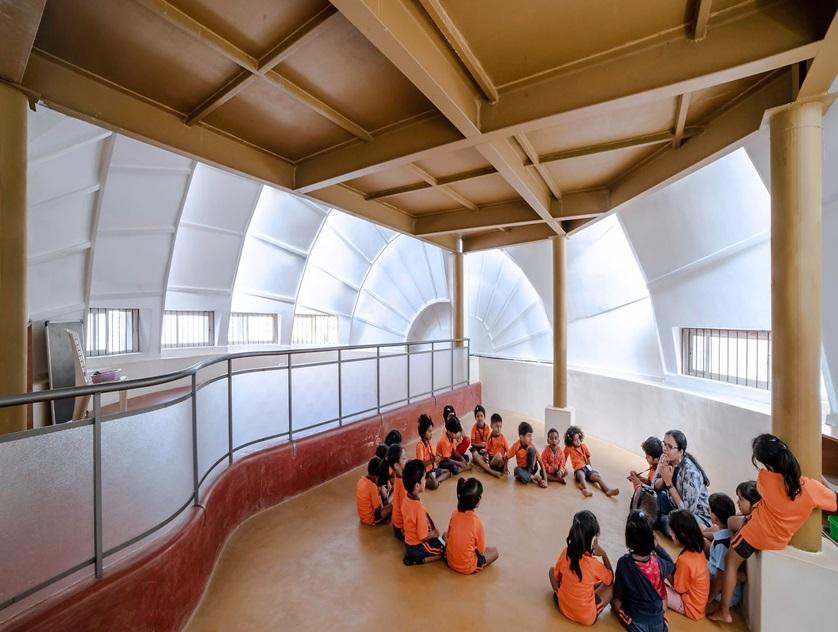Sustainability has become an essential factor in modern architecture, influencing the way buildings are designed and constructed. With rising concerns about climate change and resource depletion, architects are focusing on innovative designs that minimize environmental impact. Green architecture for educational buildings is one such approach that ensures learning spaces are not only functional but also environmentally responsible. The shift towards sustainable design benefits both occupants and the environment by reducing energy consumption, utilizing eco-friendly materials, and enhancing overall well-being.
The Rise of Green Architecture in Educational Spaces
Educational institutions play a vital role in shaping the future, and the spaces where learning takes place should reflect a commitment to sustainability. Implementing sustainable architecture buildings allows schools and universities to operate efficiently while reducing their ecological footprint. Sustainable designs incorporate natural lighting, improved ventilation, and renewable energy sources such as solar panels to decrease dependency on non-renewable resources. Green campuses also feature rainwater harvesting systems, energy-efficient classrooms, and sustainable landscaping to create healthier environments for students and faculty.
Beyond environmental benefits, sustainable educational spaces enhance learning experiences by promoting a connection to nature. Studies indicate that students in well-ventilated, naturally lit classrooms perform better academically and have improved concentration levels. The inclusion of indoor gardens, open-air study areas, and biophilic design elements fosters a sense of calm and increases productivity. By adopting environmentally responsible practices, educational institutions serve as role models for sustainability, encouraging students to appreciate and uphold ecological values.
Eco-Friendly Residential Architecture: A Step Towards Sustainable Living
The growing awareness of climate change has led to an increasing demand for eco-conscious living spaces. Eco-friendly house architects are revolutionizing home designs by incorporating sustainable materials and energy-efficient solutions. Modern green homes focus on reducing carbon footprints while enhancing comfort and functionality. Passive solar design, rainwater harvesting, and recycled construction materials are some of the key elements used to create energy-efficient homes.
A sustainable home extends beyond energy efficiency. Architects prioritize thermal insulation, natural ventilation, and renewable energy sources such as solar panels and wind turbines to create self-sufficient residences. Smart home technologies, including automated lighting and water-saving fixtures, further contribute to sustainability. Homeowners benefit from reduced utility bills, improved indoor air quality, and a lower impact on the environment. With more people seeking greener alternatives, sustainable residential architecture is becoming a defining trend in modern construction.
Eco-Conscious Office Spaces: Designing for Efficiency and Comfort
Businesses are recognizing the advantages of incorporating sustainability into workplace designs. Architects for eco-friendly offices prioritize energy efficiency, waste reduction, and improved air quality to create workspaces that enhance employee well-being and productivity. Sustainable office buildings integrate eco-friendly materials such as reclaimed wood, bamboo, and recycled metal to minimize environmental impact while maintaining a contemporary aesthetic.
Workplace sustainability extends to energy-efficient lighting, advanced HVAC systems, and the use of renewable energy. Natural lighting plays a crucial role in reducing the reliance on artificial sources, lowering energy consumption, and improving employee focus. Additionally, green roofs and indoor plants contribute to cleaner air and a more comfortable working environment. Flexible office layouts with shared spaces and adaptive furniture further support eco-conscious design principles. By investing in sustainable architecture, businesses demonstrate a commitment to environmental responsibility while fostering a healthier and more inspiring workspace.
The Role of Sustainable Architecture in Urban Development
As cities expand, the importance of environmentally friendly buildings continues to grow. Urban areas face challenges such as pollution, energy shortages, and limited green spaces, making sustainable architecture essential. Eco-friendly house architects are integrating smart technologies and green construction practices to create energy-efficient residential complexes that balance urban growth with ecological preservation. High-rise buildings with green facades, vertical gardens, and solar panel installations contribute to a healthier urban ecosystem.
Sustainable architecture is also addressing the issue of waste management in cities. Recycling construction materials, repurposing old structures, and utilizing biodegradable components help reduce landfill waste. Water-efficient plumbing systems and eco-friendly insulation solutions contribute to conservation efforts. By implementing sustainable building practices, urban planners and architects are paving the way for future generations to live in environmentally responsible cities without compromising modern conveniences.
Shaping a Sustainable Future Through Architecture
The transition towards sustainable architecture is essential for reducing environmental impact and promoting healthier living and working spaces. Architects for eco-friendly offices and homes are driving this movement by designing energy-efficient buildings that prioritize both functionality and sustainability. Whether in educational institutions, residential homes, or corporate offices, green architecture is reshaping the way spaces are designed and utilized.
As the demand for sustainable buildings continues to rise, architectural firms such as https://www.khamdesign.in/ are leading the way in creating eco-conscious designs that align with environmental goals. By embracing green principles in construction, communities can move towards a future where sustainability and innovation go hand in hand.





Comments